Whether you just discovered the wonders of 3D printing or have been in the field for years, the ability to use 3D modeling or computer-aided design (CAD) software is a tremendously valuable skill. When you begin your journey into 3D modeling the first thing to do is to find the software that suits you.
Tinkercad
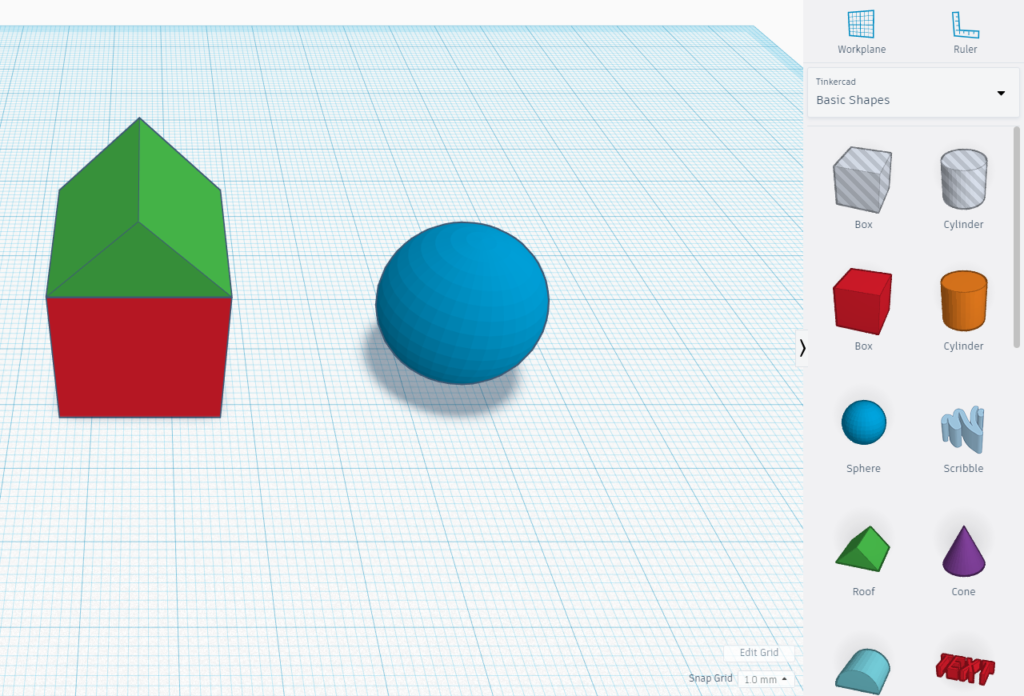
Tinkercad is a browser-based, entry-level design software revolving around basic shapes. It allows the user to create a model using a set of preset objects and shapes. This is a fantastic program to introduce the younger generation to the joys of 3D modeling and is also a great starting point for anyone looking to get into design. You won’t be able to create anything super complex but Tinkercad is capable of making some awesome basic models. Tinkercad also has direct integration with Thingiverse and MyMiniFactory allowing for the printing of your model, even if you don’t have a 3D printer of your own.
Learn more about TinkerCAD on our deep dive.
SketchUp
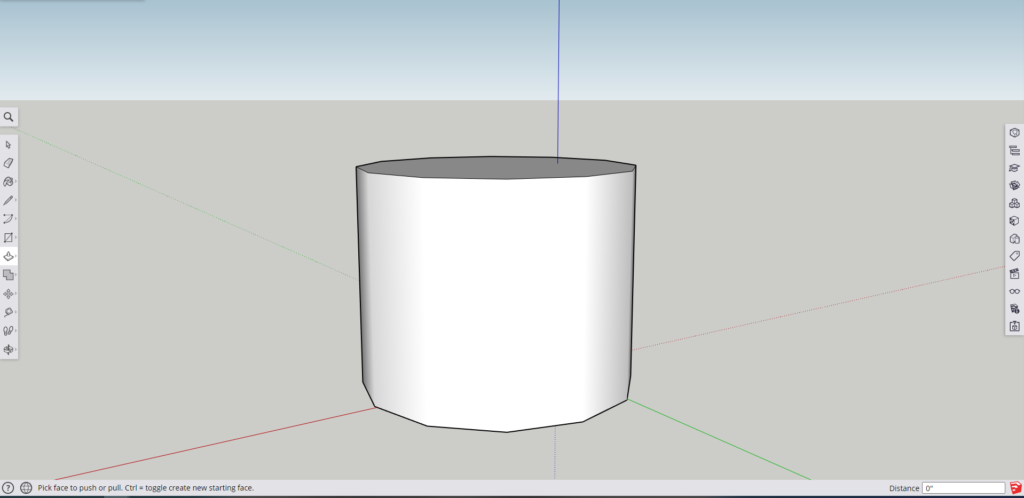
Like Tinkercad, SketchUp is a browser-based design program but it is much more in-depth than Tinkercad. SketchUp also has a much steeper learning curve. There are three versions of SketchUp: Free, Shop, and Pro. The free version is fairly basic but does allow for detailed design and each version adds more features. SketchUp allows you to create designs from 2D sketches and the Pro version is great for architectural work. I would recommend SketchUp to those who view Tinkercad as too basic but still have little to no experience with 3D design.
One thing to keep in mind with SketchUp – it was not designed from the ground up to be used with 3D printing, so it is possible to have a model that looks good on-screen but gets mangled with things like flipped and intersecting surfaces when you go to slice it for 3D printing.
FreeCAD
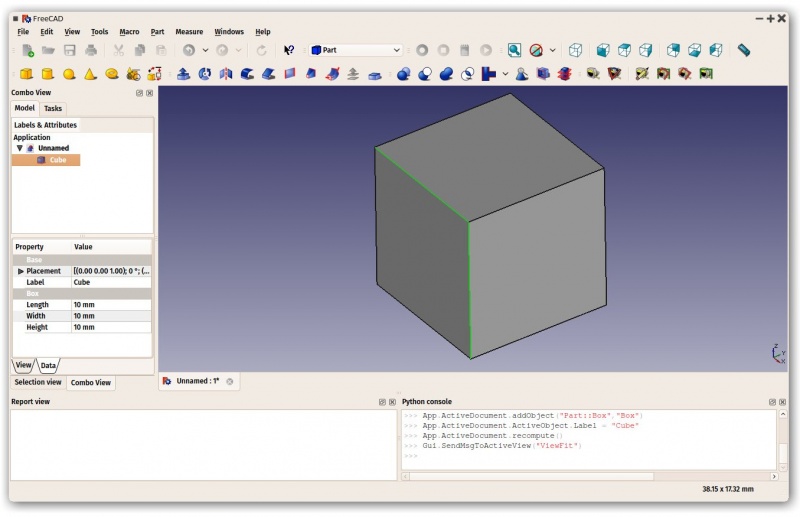
FreeCAD is a free open-source modeling program. It is much more capable than Tinkercad and SketchUp, allowing users to create dimensionally accurate models and sketches. Unlike Tinkercad, FreeCAD uses a parametric approach to modeling which allows the creation or replication of real-world objects as well as a mathematical approach to modeling. FreeCAD is a good program to begin parametric modeling with, but the overall feel and user interface of FreeCAD leaves much to be desired. At times it can feel clunky and cumbersome and the UI can be confusing. If you are a fan of open-source software or just want to scratch the surface of parametric design then FreeCAD is a great option.
Autodesk Fusion360
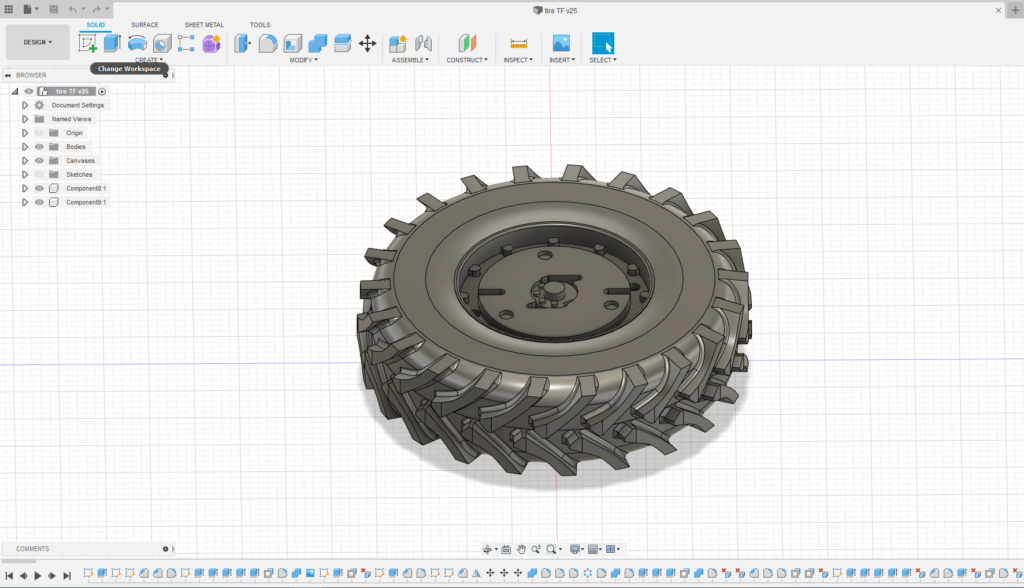
Fusion360 is a desktop-installed, cloud-based (it needs to connect to the internet at least every two weeks) parametric design software. It is a subscription-based service but can be used free of charge for personal use. Personally, Fusion360 (F360) is my go-to design software. It allows for very precise design while maintaining a user-friendly environment. It also has the best workflow of any CAD software I have used. Since F360 is cloud-based it allows for effortless collaboration or sharing of work and provides centralized storage of your designs, meaning that you can access them from any computer with F360 installed. F360 is a workhorse in the parametric modeling world and I would encourage anyone interested in 3D design to give it a try, you will not be disappointed.
Learn more about Fusion360 on our deep dive.
Blender
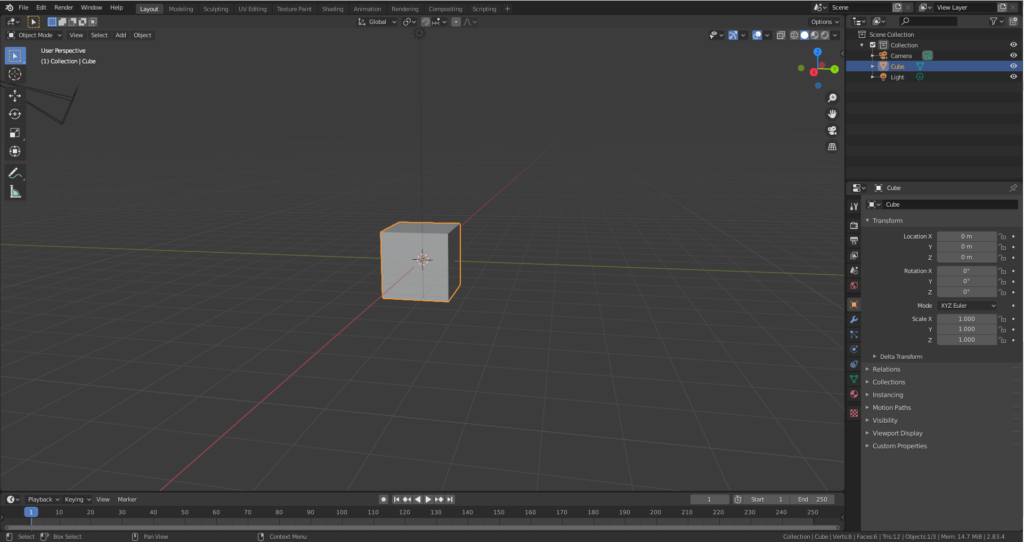
Blender is a free open source software that is very different from the other programs listed so far. Unlike programs like F360 or FreeCAD, Blender is not a parametric design tool – it is mesh-based. Think of Blender as a sculpting tool rather than a replication tool. You’d have a very hard time creating a dimensionally accurate model in Blender, however it is possible. Where Blender stands out is in its ability to create organic or lifelike models. Blender is phenomenal for creating things with many natural shapes and curves. Blender is the artist’s brush while other CAD programs are the engineer’s pencil. If you want to create lifelike forms or have a background in art, Blender is one of the most versatile tools for organic modeling and sculpting.
These are just a few of the many design softwares out there. I left out programs like Solidworks which are very expensive and tailored towards professional or commercial use because they should not be your introduction to 3D design. Start with the basics and as your skill improves move to more advanced software. Eventually, you will find the perfect fit and fine-tune your workflow. The sky’s the limit with 3D design but like all new skills, it takes commitment and practice to truly master.

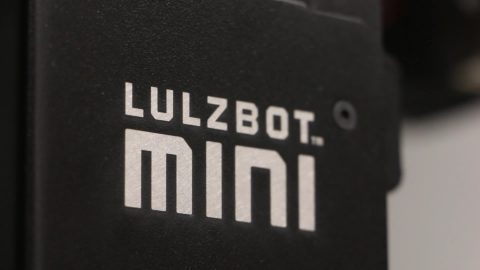
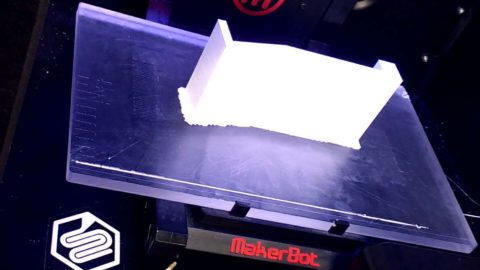

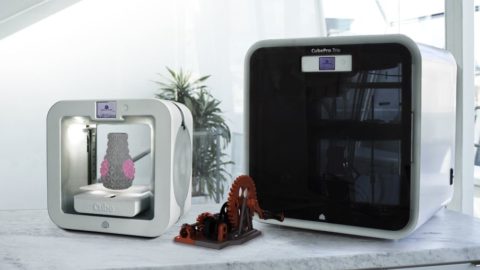

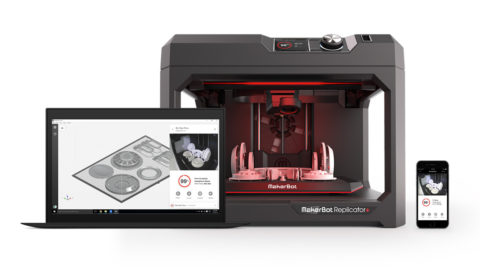
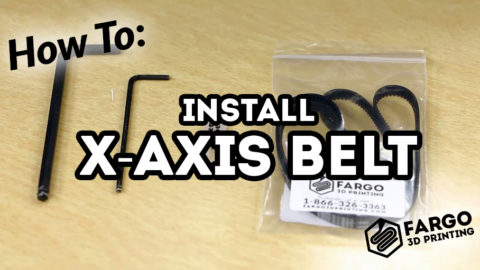
lasix 10 mg price
It¦s in point of fact a nice and useful piece of info. I¦m glad that you simply shared this useful information with us. Please keep us informed like this. Thanks for sharing.
how to buy misoprostol over the counter
sildenafil in usa
albendazole for sale
dapoxetine 30 mg tablet online purchase in india
https://doxycycline.science/# doxycycline vibramycin
sildenafil online purchase
online pharmacy quick delivery
cialis 20
online pharmacy dubai
tizanidine drug
disulfiram rx
toradol migraine
hello!,I like your writing so much! share we communicate more about your article on AOL? I require a specialist on this area to solve my problem. May be that’s you! Looking forward to see you.
When I initially commented I clicked the -Notify me when new feedback are added- checkbox and now each time a comment is added I get 4 emails with the same comment. Is there any means you’ll be able to take away me from that service? Thanks!
I carry on listening to the newscast speak about receiving free online grant applications so I have been looking around for the top site to get one. Could you tell me please, where could i find some?
lyrica tablets uk
I?m not sure where you’re getting your info, but great topic. I needs to spend some time learning more or understanding more. Thanks for great info I was looking for this info for my mission.
An interesting discussion is worth comment. I think that you should write more on this topic, it might not be a taboo subject but generally people are not enough to speak on such topics. To the next. Cheers
Thanks for the sensible critique. Me and my neighbor were just preparing to do a little research about this. We got a grab a book from our area library but I think I learned more clear from this post. I’m very glad to see such excellent information being shared freely out there.
Appreciate it for this post, I am a big fan of this site would like to go along updated.
I?¦ve been exploring for a bit for any high quality articles or weblog posts in this sort of space . Exploring in Yahoo I finally stumbled upon this web site. Studying this information So i am satisfied to show that I’ve a very just right uncanny feeling I came upon exactly what I needed. I most no doubt will make certain to don?¦t fail to remember this web site and provides it a glance on a continuing basis.
viagra price list
yacht charter seychelles european-sailing.com
anti nausea medication over the counter best over the counter cold medicine
ordering neurontin online
I like this site very much, Its a really nice situation to read and receive info .
Awesome weblog! Maybe you have any sort of tips for ambitious experts? I’m planning to start my own website in the near future nonetheless I’m a little lost on almost everything. Could you propose starting off with a totally free website like WordPress blogs or decide on a paying solution? You’ll find so many options out there that I’m totally confused .. Any other ideas? Kudos!
I?m not sure where you are getting your info, but good topic. I needs to spend some time learning more or understanding more. Thanks for magnificent information I was looking for this information for my mission.
You must take part in a contest for one of the best blogs on the web. I will recommend this website!
You possibly can submit your resume to ResumeBoomer so that they can send your resume to various employers.
strattera 40mg cap
You should take part in a contest for one of the best blogs on the web. I will recommend this site!
over the counter heartburn medicine anti nausea medication over the counter
is zofran over the counter over the counter erectile dysfunction pills
I have been browsing on-line more than three hours these days, yet I never found any fascinating article like yours. It?¦s beautiful price sufficient for me. In my opinion, if all webmasters and bloggers made good content as you did, the net can be much more useful than ever before.
I really like your blog.. very nice colors & theme. Did you make this website yourself or did you hire someone to do it for you? Plz respond as I’m looking to construct my own blog and would like to find out where u got this from. appreciate it
I would like to thnkx for the efforts you have put in writing this website. I am hoping the same high-grade site post from you in the upcoming also. Actually your creative writing skills has encouraged me to get my own web site now. Actually the blogging is spreading its wings quickly. Your write up is a great example of it.
This is really interesting, You’re a very skilled blogger. I have joined your feed and look forward to seeking more of your excellent post. Also, I’ve shared your web site in my social networks!
Thanks for the sensible critique. Me and my neighbor were just preparing to do some research on this. We got a grab a book from our local library but I think I learned more from this post. I’m very glad to see such magnificent information being shared freely out there.
Naked Kate Upton Leaked hot home pics.
https://celebviva.com/naked-kate-upton-leaked-hot-home-pics/
Sexy photos by Kate Upton.
I truly love your website.. Excellent colors & theme.
виртуальный номер сша continent-telecom.com
Hey There. I found your blog the use of msn. That is a really smartly written article. I?ll make sure to bookmark it and come back to learn extra of your helpful information. Thanks for the post. I will definitely comeback.
Good post and right to the point. I am not sure if this is truly the best place to ask but do you people have any thoughts on where to employ some professional writers? Thank you 🙂
I have acquired some new issues from your web site about computer systems. Another thing I have always assumed is that computers have become something that each home must have for many reasons. They provide convenient ways to organize the home, pay bills, shop, study, hear music and perhaps watch tv shows. An innovative method to complete all of these tasks is by using a notebook computer. These pc’s are portable ones, small, potent and portable.
over the counter pink eye medicine over the counter erection pills
I know this if off topic but I’m looking into starting my own blog and was curious what all is required to get set up? I’m assuming having a blog like yours would cost a pretty penny? I’m not very web savvy so I’m not 100 positive. Any suggestions or advice would be greatly appreciated. Appreciate it
diuretics over the counter is zofran over the counter
https://over-the-counter-drug.com/# sleeping pills over the counter
What’s up to all, the contents present at this web page are actually remarkable for people experience, well, keep up the good work fellows.
I was suggested this blog by my cousin. I am not sure whether this post is written by him as no one else know such detailed about my problem. You are amazing.
Outstanding post, you have pointed out some fantastic details , I likewise believe this s a very excellent website.
Greetings from California! I’m bored at work so I decided to check out your blog on my iphone during lunch break. I really like the knowledge you present here and can’t wait to take a look when I get home. I’m amazed at how quick your blog loaded on my phone .. I’m not even using WIFI, just 3G .. Anyhow, excellent blog!
I haven¦t checked in here for a while because I thought it was getting boring, but the last several posts are great quality so I guess I¦ll add you back to my daily bloglist. You deserve it my friend 🙂
Thanks for sharing helpful information! Visit : Digital marketing write for us
nausea medication over the counter nausea medicine over the counter for pregnancy
course workload coursework in area of expertise coursework define coursework based
allergy medications over-the-counter ivermectin over the counter walgreens
coursework template coursework for business administration coursework sample coursework examination
coursework calculator coursework example pdf coursework and research coursework levels
Wonderful website. Lots of helpful info here. I¡¦m sending it to some pals ans additionally sharing in delicious. And obviously, thank you for your effort.
Thanks for the good writeup. It in reality used to be a enjoyment account it. Glance advanced to more added agreeable from you!
I visited several sites however the audio quality for audio songs present at this site is actually marvelous.|
I conceive you have observed some very interesting points, thankyou for the post.
I really liked this post i actually read your blog very often, and you’re consistently coming out with some great stuff.
I’m sending it to some buddies ans additionally sharing in delicious. And certainly, thank you in your effort!
coursework in a sentence design technology coursework creative writing
coursework coursework que significa
https://over-the-counter-drug.com/# over the counter antidepressants
Great beat ! I would like to apprentice while you amend your web site, how could i subscribe for a blog website? The account aided me a acceptable deal. I had been a little bit acquainted of this your broadcast provided bright clear concept
There is noticeably a bundle to know about this. I assume you made certain nice points in features also.
coursework king’s college coursework bank coursework questions coursework report
coursework in english coursework vs research masters coursework for high school coursework grades
coursework marking
custom coursework writing
coursework writing uk
coursework title coursework planner coursework login king’s college london coursework
I visited many web pages but the audio quality for audio songs current at this web site is actually superb.
Its like you read my mind! You appear to know so much about this, such as you wrote the e-book in it or something. I feel that you simply could do with a few to drive the message house a little bit, but instead of that, this is fantastic blog. A great read. I will definitely be back.
nea coursework history a level coursework masters meaning coursework info custom coursework writing service
epinephrine over the counter over the counter urinary tract infection meds
appetite suppressants over the counter over the counter antidepressants
Thanks-a-mundo for the post.Really thank you! Awesome.
My website: cartoon porn
Appreciate it for this wonderful post, I am glad I discovered this web site on yahoo.
Great post, you have pointed out some fantastic points, I likewise conceive this s a very fantastic website.
over the counter over-the-counter
hydroxychloroquine over the counter male enhancement pills over the counter
I gotta favorite this site it seems very beneficial handy
My website: cartoon porn
Nice post
https://drugsoverthecounter.com/# omeprazole over the counter
Do you have a spam issue on this blog; I also am a blogger, and I was wondering your situation; many of us have developed some nice procedures and we are looking to swap methods with other folks, be sure to shoot me an e-mail if interested.
https://drugsoverthecounter.shop/# over the counter antibiotic
I?ve been exploring for a little bit for any high-quality articles or blog posts on this kind of area . Exploring in Yahoo I at last stumbled upon this site. Reading this information So i?m happy to convey that I’ve an incredibly good uncanny feeling I discovered just what I needed. I most certainly will make certain to do not forget this web site and give it a look regularly.
Hey! I’m at work surfing around your blog from my new apple iphone! Just wanted to say I love reading through your blog and look forward to all your posts! Keep up the superb work!
best over the counter sleep aids diflucan over the counter
The core of your writing while sounding agreeable at first, did not settle well with me personally after some time. Someplace throughout the paragraphs you actually managed to make me a believer but just for a very short while. I still have got a problem with your jumps in logic and one would do well to fill in those breaks. In the event you can accomplish that, I will certainly end up being amazed.
over the counter pill for yeast infection over the counter ear wax removal
As a Newbie, I am continuously exploring online for articles that can be of assistance to me.
My website: cartoon porn
I do enjoy the way you have presented this particular concern and it does give us some fodder for consideration. Nonetheless, through just what I have witnessed, I only trust as the feed-back pack on that folks continue to be on point and in no way get started upon a soap box of the news of the day. Anyway, thank you for this outstanding piece and whilst I can not agree with the idea in totality, I respect your viewpoint.
I really wanted to send a simple remark to say thanks to you for those fantastic facts you are placing on this website. My prolonged internet look up has finally been compensated with reliable knowledge to go over with my companions. I ‘d assert that most of us readers actually are undoubtedly fortunate to live in a superb website with so many perfect people with very beneficial solutions. I feel extremely grateful to have seen the website page and look forward to some more fabulous moments reading here. Thank you again for a lot of things.
Pretty great post. I simply stumbled upon your weblog and wished to mention that I have really loved surfing around your weblog posts. After all I will be subscribing on your feed and I’m hoping you write once more very soon!
I haven’t checked in here for some time since I thought it was getting boring, but the last few posts are good quality so I guess I’ll add you back to my everyday bloglist. You deserve it my friend 🙂
I reckon something truly special in this website.
My website: cartoon porn
Great write-up, I?m regular visitor of one?s blog, maintain up the nice operate, and It is going to be a regular visitor for a long time.
Thanks-a-mundo for the post.Really thank you! Awesome.
My website: cartoon porn
over the counter ear wax removal over the counter nausea medicine for pregnancy
amei este site. Para saber mais detalhes acesse nosso site e descubra mais. Todas as informações contidas são conteúdos relevantes e diferentes. Tudo que você precisa saber está está lá.
over the counter adderall anthem over the counter catalogue
coursework knowledge definition coursework download
free coursework for masters degree coursework vs dissertation
Thanks-a-mundo for the post.Really thank you! Awesome.
My website: cartoon porn
https://drugsoverthecounter.com/# over the counter insulin
Very superb information can be found on web site. “The absence of flaw in beauty is itself a flaw.” by Havelock Ellis.
of course like your website but you need to check the spelling on quite a few of your posts. Many of them are rife with spelling problems and I find it very troublesome to tell the truth then again I will surely come again again.
Very good post.Really looking forward to read more. Great.
My website: cartoon porn
best over-the-counter medicine for sinus infection over the counter muscle relaxers cvs
Good write-up, I?¦m regular visitor of one?¦s blog, maintain up the excellent operate, and It is going to be a regular visitor for a long time.
Now instead of show-shaw weddings, people are turning to court marriages peacefully without wasting money and time. All court marriages are performed under the Special Marriage Act. Arya Samaj mandir Panchkula
I carry on listening to the news update speak about getting free online grant applications so I have been looking around for the top site to get one. Could you advise me please, where could i get some?
I really liked this post i actually read your blog fairly often, and you’re constantly coming out with a lot of great stuff. I embedded this on my fb, and my followers really liked it.
I like this web site very much, Its a very nice billet to read and receive information.
Today, with all the fast way of living that everyone leads, credit cards have a big demand throughout the economy. Persons throughout every area of life are using the credit card and people who are not using the credit card have arranged to apply for even one. Thanks for sharing your ideas in credit cards.
best appetite suppressant over the counter over the counter asthma inhaler
The FDA discovered this substance while looking into international postal shipments. African superman suppliers include sildenafil, the active component of the FDA-approved prescription medication Viagra, which is used to treat erectile dysfunction, according to FDA laboratory testing (ED). This unlisted component may interact with the nitrates in several prescription medications, including nitroglycerin, and cause dangerously low blood pressure. Nitrates are frequently taken by men who have diabetes, high blood pressure, high cholesterol, or heart disease.
Just wanna remark that you have a very nice website , I enjoy the design it actually stands out.
https://datingonline1st.shop/# best sites online dating
Some truly quality content on this site, saved to bookmarks.
I was very pleased to find this web-site.I wanted to thanks for your time for this wonderful read!! I definitely enjoying every little bit of it and I have you bookmarked to check out new stuff you blog post.
best lexapro coupon
You are my aspiration, I own few blogs and often run out from to post .
single senior dating sites free local singles login
dating servie online dting
Check out Info Tech Inn, which is a fantastic platform for getting knowledge, if you’re looking for information on a range of topics.
Click “seo tips for small business” to learn more about SEO. If you’re starting an online business, you’ll require SEO expertise.
I loved as much as you’ll receive carried out right here. The sketch is tasteful, your authored subject matter stylish. nonetheless, you command get got an shakiness over that you wish be delivering the following. unwell unquestionably come more formerly again since exactly the same nearly very often inside case you shield this increase.
https://datingonline1st.shop/# internet dating site
We provided a space for the number of visitors who come to our blog every day looking for information on digital marketing for text writers to click “write for us marketing”.
Hi, I think your site might be having browser compatibility issues. When I look at your website in Safari, it looks fine but when opening in Internet Explorer, it has some overlapping. I just wanted to give you a quick heads up! Other then that, fantastic blog!
Good write-up, I am regular visitor of one’s website, maintain up the excellent operate, and It’s going to be a regular visitor for a long time.
Terrific work! This is the type of info that should be shared around the web. Shame on the search engines for not positioning this post higher! Come on over and visit my web site . Thanks =)
online dating online free sites
https://datingonline1st.com/# best online dating websites
dating awareness women’s network dating personal ads
This is really interesting, You are a very skilled blogger. I have joined your feed and look forward to seeking more of your great post. Also, I’ve shared your site in my social networks.
Perfect piece of work you have done, this website is really cool with excellent info .
You have observed very interesting points! ps nice web site.
I do agree with all of the ideas you’ve presented in your post. They’re really convincing and can definitely work. Still, the posts are too quick for novices. May you please extend them a bit from next time? Thanks for the post.
I?¦ve recently started a website, the information you provide on this web site has helped me greatly. Thank you for all of your time & work.
I’m often to blogging and i actually appreciate your content. The article has really peaks my interest. I am going to bookmark your web site and hold checking for brand spanking new information.
Major thanks for the article post. Much thanks again.
My website: анальный секс со зрелыми
I think this is one of the most vital information for me. And i am glad reading your article. But wanna remark on some general things, The web site style is great, the articles is really great : D. Good job, cheers
As a Newbie, I am continuously exploring online for articles that can be of assistance to me.
My website: бесплатное порно в отличном качестве
lyrica 300 mg price uk
I reckon something truly special in this website.
My website: анал подборка
Wohh precisely what I was searching for, regards for putting up.
My website: порно групповуха анал
where to buy cipro
I am constantly searching online for ideas that can aid me. Thanks!
It is perfect time to make some plans for the future and it is time to be happy. I have read this post and if I could I wish to suggest you some interesting things or suggestions. Perhaps you could write next articles referring to this article. I wish to read more things about it!
I have read a few just right stuff here. Definitely worth bookmarking for revisiting. I surprise how a lot effort you place to create this type of wonderful informative web site.
canada discount pharmacy https://canadianpharmacy.icu/# cheap canadian pharmacy online
I’ve been surfing on-line greater than three hours nowadays,
but I never found any interesting article like yours.
It is pretty worth sufficient for me. In my opinion, if
all webmasters and bloggers made just right content as you probably
did, the net might be much more helpful than ever
before.
My page :: Rising Phoenix Male Enhancement Reviews
There is noticeably a bundle to know about this. I assume you made certain nice points in features also.
I just found this blog and have high hopes for it to continue. Keep up the great work, its hard to find good ones. I have added to my favorites. Thank You.
You make so many great points here that I read your article a couple of times. Your views are in accordance with my own for the most part. This is great content for your readers.
WONDERFUL Post.thanks for share..more wait .. …
hello there and thank you for your information – I’ve definitely picked up anything new from right here. I did however expertise a few technical issues using this website, as I experienced to reload the website lots of times previous to I could get it to load correctly. I had been wondering if your hosting is OK? Not that I am complaining, but slow loading instances times will very frequently affect your placement in google and could damage your quality score if advertising and marketing with Adwords. Well I’m adding this RSS to my email and could look out for a lot more of your respective intriguing content. Ensure that you update this again very soon..
Thank you for another informative blog. Where else could I get that kind of info written in such a perfect way? I’ve a project that I am just now working on, and I’ve been on the look out for such information.
medication augmentin 875
Excellent blog here! Also your web site loads up fast! What web host are you using? Can I get your affiliate link to your host? I wish my website loaded up as quickly as yours lol
I would like to thnkx for the efforts you’ve put in writing this site. I’m hoping the same high-grade site post from you in the upcoming as well. Actually your creative writing abilities has inspired me to get my own site now. Actually the blogging is spreading its wings quickly. Your write up is a great example of it.
buy cheap neurontin
azithromycin in singapore
I am perpetually thought about this, thanks for putting up.
Amazing blog! Do you have any hints for aspiring writers? I’m hoping to start my own website soon but I’m a little lost on everything. Would you propose starting with a free platform like WordPress or go for a paid option? There are so many options out there that I’m completely confused .. Any ideas? Thanks!
I wanted to thank you for this great read!! I definitely enjoying every little bit of it I have you bookmarked to check out new stuff you post…
I’ve been suhrfing online more than 3 hours these days, yyet I never found anny fascinating article like yours.
It’s beautiful worth sufficient ffor me. In my opinion, if all wweb owners and bloggers mad good content material as you probably did, the web can be much more
useful than ever before.
my web site – xxx porn
I believe this web site has got some real great information for everyone : D.
Good – I should certainly pronounce, impressed with your web site. I had no trouble navigating through all the tabs and related information ended up being truly easy to do to access. I recently found what I hoped for before you know it at all. Quite unusual. Is likely to appreciate it for those who add forums or something, web site theme . a tones way for your client to communicate. Nice task.
Good write-up, I¦m normal visitor of one¦s website, maintain up the excellent operate, and It’s going to be a regular visitor for a lengthy time.
Code Promo 1xBet. Click Here:👉 https://popvalais.ch/wp-includes/inc/?code-promo-1xbet-burkina-faso-78-000xof.html
I carry on listening to the reports speak about getting boundless online grant applications so I have been looking around for the best site to get one. Could you tell me please, where could i get some?
Really clear web site, thanks for this post.
When I originally commented I clicked the -Notify me when new comments are added- checkbox and now each time a comment is added I get four emails with the same comment. Is there any way you can remove me from that service? Thanks!
Good – I should certainly pronounce, impressed with your web site. I had no trouble navigating through all tabs as well as related info ended up being truly simple to do to access. I recently found what I hoped for before you know it in the least. Reasonably unusual. Is likely to appreciate it for those who add forums or something, site theme . a tones way for your client to communicate. Nice task.
chat live porn. Click Here:👉 https://porno-sex.cam/
Hi! I know this is kinda off topic but I was wondering if you knew where I could locate a captcha plugin for my comment form? I’m using the same blog platform as yours and I’m having problems finding one? Thanks a lot!
canada rx pharmacy
As a Newbie, I am continuously exploring online for articles that can be of assistance to me.
My website: смотреть домашнее порно бесплатно
I’d need to verify with you here. Which isn’t something I often do! I take pleasure in reading a submit that may make folks think. Also, thanks for permitting me to remark!
I am incessantly thought about this, thanks for posting.
My website: анал домашнее видео
A round of applause for your article. Much thanks again.
My website: porno orgazm
This site definitely has all of the information I needed about this subject
My website: порно домашнее оргазм
I’m extremely pleased to discover this website. I wanted to thank you for ones time just for this fantastic read!
My website: порно молодых видео
Very interesting information!Perfect just what I was searching for!
My website: hd heccrjt gjhyj
I am now not certain the place you are getting your information, but great topic. I needs to spend some time studying more or figuring out more. Thanks for great info I was in search of this info for my mission.
Aw, this was a really nice post. In concept I would like to put in writing like this moreover – taking time and precise effort to make an excellent article… but what can I say… I procrastinate alot and in no way appear to get something done.
lyrica medication cost
I’m extremely pleased to discover this website. I wanted to thank you for ones time just for this fantastic read!
My website: gjhyj heccrjt tcgkfnyj
Nice blog right here! Additionally your web site a lot up very fast! What web host are you the use of? Can I get your affiliate link for your host? I want my site loaded up as quickly as yours lol
lioresal 5mg
Hey! I just wanted to ask if you ever have any trouble with hackers? My last blog (wordpress) was hacked and I ended up losing several weeks of hard work due to no backup. Do you have any solutions to protect against hackers?
A lot of blog writers nowadays yet just a few have blog posts worth spending time on reviewing.
My website: русскоедомашнеепорно
Ponto IPTV a melhor programacao de canais IPTV do Brasil, filmes, series, futebol
My website: смотреть частное русское порно
I couldn’t resist commenting
Some truly nice and utilitarian information on this web site, likewise I think the pattern has good features.
A lot of blog writers nowadays yet just a few have blog posts worth spending time on reviewing.
My website: video 24 porno
ในปี 2565 ทุกคนที่ประสบปัญหาในเรื่องของการเงินจะหมดไปเมื่อได้ลงทุนกับ playslot888.com ผู้ให้บริการเว็บตรงสล็อต ที่จะสร้างรายได้ออนไลน์
ผ่านเกมslotonlineที่สามารถหารายได้ได้จริง มีเกมยอดฮิตให้เลือกเล่นมากหลายค่าย
จากสล็อตPG,SLOT XO,live22 online,สล็อตโจ๊กเกอร์เว็บตรง,
SLOT SUPER,ค่าย jili,pragmatic play ซึ่งมีให้เลือกเล่นมากยิ่งกว่า 300 เกมส์ เลยทีเดียว ซึ่งการเล่นของทุกท่านจะไม่ผ่านตัวกลางใดๆ เล่นได้โดยตรง ไได้รับการยืนยันจากหน่วยงานเมืองนอกมากมาย ไม่ว่าจะเป็น GMM ซึ่งเป็นหน่วยงานที่ควบคุมเกี่ยวกับเว็บไซต์พนันออนไลน์โดยตรง เพื่อไม่ให้ผู้รับบริการนั้นโดยการเอาเปรียบ คาสิโนออนไลน์เว็บตรงของเรานั้น ไม่มีการดัดแปลงปรับปรุงแก้ไขตัวเกมอะไร เล่นง่าย แตกง่ายแตกบ่อย ไม่เหมือนเว็บไซต์อื่นๆที่ท่านเคยเล่นมาอย่างแน่แท้ มีบริการที่จะเพิ่มความสะดวกให้กับสมาชิกอย่าง เว็บสล็อตแตกง่าย ฝากถอน ไม่มีขั้นต่ำ ที่เร็วทันใจ ใช้เวลาไม่นานไม่เกิน 10 นาที อีกทั้งยังรองรับslotฝากถอนผ่านวอเลท โดยไม่จำเป็นจำต้องใช้บัญชีธนาคาร อีกทั้งยังจัดเต็มไปด้วยโปรโมชั่นสล็อตเครดิตฟรี
และยังเอาใจผู้ที่มีทุนน้อย ที่จะฝากเงินรับโบนัสฟรีๆ อย่างสล็อตสมัคร10ได้100,เว็บสล็อต ฝาก
20 รับ 100 สำหรับท่านที่สนใจอยากมีรายได้เสริมผ่านหนทางออนไลน์
วันนี้ playslot888.com เปิดให้บริการเว็บตรงสมัครฟรี เข้ามาเปิดประสบการณ์ รวมบันเทิงใจได้ตลอด 24 ชั่วโมง ไม่มีวันหยุด และสำหรับใครที่ยังเป็นมือใหม่ เรามีบทความ
รีวิวเกมสล็อตแตกง่าย
ซึ่งมีเกมดังมากมายอย่างเช่น Fortune Ox,Candy Bonanza,สล็อตกัวกระโหลก สามารถอ่านได้ฟรี เพิ่มโอกาสให้ เล่นเว็บตรงไม่ผ่านเอเย่นต์แตกง่าย แตกง่าย แตกบ่อย ได้มากยิ่งขึ้น Playslot888
My brother suggested I would possibly like this blog. He used to be totally right. This submit actually made my day. You cann’t consider just how a lot time I had spent for this info! Thank you!
I really treasure your piece of work, Great post.
prednisone cost us
I?¦ve been exploring for a bit for any high-quality articles or blog posts on this kind of area . Exploring in Yahoo I ultimately stumbled upon this site. Reading this information So i?¦m glad to show that I’ve a very just right uncanny feeling I found out exactly what I needed. I such a lot indubitably will make certain to don?¦t overlook this site and provides it a glance regularly.
I truly appreciate your work, Great post.
An interesting discussion is worth comment. I think that you should write more on this topic, it might not be a taboo subject but generally people are not enough to speak on such topics. To the next. Cheers
Those are yours alright! . We at least need to get these people stealing images to start blogging! They probably just did a image search and grabbed them. They look good though!
Having read this I thought it was very informative. I appreciate you taking the time and effort to put this article together. I once again find myself spending way to much time both reading and commenting. But so what, it was still worth it!
I enjoy your writing style truly enjoying this web site.
Wonderful site. Plenty of useful information here. I am sending it to several friends ans also sharing in delicious. And obviously, thanks for your effort!
prinivil price
Whats Going down i’m new to this, I stumbled upon this I’ve found It positively useful and it has aided me out loads. I hope to give a contribution & help other users like its helped me. Good job.
Thanks , I have recently been looking for information about this topic for ages and yours is the greatest I have discovered so far. But, what about the bottom line? Are you sure about the source?
This blog is definitely rather handy since I’m at the moment creating an internet floral website – although I am only starting out therefore it’s really fairly small, nothing like this site. Can link to a few of the posts here as they are quite. Thanks much. Zoey Olsen
Muchos Gracias for your article.Really thank you! Cool.
My website: лучшее русское порно
Hello there, You’ve done an excellent job. I’ll certainly digg it and personally recommend to my friends. I am sure they will be benefited from this web site.
lexapro 30 mg tablet
Major thanks for the article post. Much thanks again.
My website: порно русская училка
As a Newbie, I am always searching online for articles that can help me. Thank you
My website: русское порно видео по категориям
Ponto IPTV a melhor programacao de canais IPTV do Brasil, filmes, series, futebol
My website: порно категории русское
Your place is valueble for me. Thanks!…
I got what you intend,bookmarked, very decent website.
My website: русское порно с пьяной
Heya this is kinda of off topic but I was wondering if blogs use WYSIWYG editors or if you have to manually code with HTML. I’m starting a blog soon but have no coding knowledge so I wanted to get advice from someone with experience. Any help would be greatly appreciated!
I got what you intend,bookmarked, very decent website.
My website: порно ролики бесплатно
I am incessantly thought about this, thanks for posting. https://www.hampdenstateuniversity.com/
You actually make it seem so easy with your presentation but I
find this topic to be really something that I think I would never understand.
It seems too complex and extremely broad for me. I am looking forward for your next post, I’ll try to get the hang of
it! https://www.sheffieldstateuniversity.com/
There’s noticeably a bundle to know about this. I assume you made certain nice factors in options also.
It’s truly a great and useful piece of information. I am glad that you shared this useful information with us. Please stay us informed like this. Thank you for sharing.
Thank you for another excellent post. Where else could anybody get that type of info in such a perfect way of writing? I have a presentation next week, and I am on the look for such info.
Ponto IPTV a melhor programacao de canais IPTV do Brasil, filmes, series, futebol
My website: русское домашнее порно анал
My website: оргазм видео порно
Thanks for sharing, this is a fantastic blog post.Really thank you! Much obliged.
My website: лучшее порно домашнее
Thanks for sharing, this is a fantastic blog post.Really thank you! Much obliged.
My website: проно анал
A lot of blog writers nowadays yet just a few have blog posts worth spending time on reviewing.
My website: русское порно с молодыми девушками
A lot of blog writers nowadays yet just a few have blog posts worth spending time on reviewing.
My website: частное порно дома
This site definitely has all of the information I needed about this subject
My website: домашний секс со студентками
Very good post.Really looking forward to read more. Great.
My website: порно оргазм бесплатно
I reckon something truly special in this website.
My website: анал толпой
Very good post.Really looking forward to read more. Great.
My website: секс видео казашки
Fantastic items from you, man. I’ve understand your stuff prior to and you’re simply too magnificent. I actually like what you’ve acquired right here, certainly like what you’re stating and the way in which wherein you assert it. You are making it enjoyable and you still take care of to stay it sensible. I can’t wait to learn far more from you. That is really a terrific website.
My website: телку ебут толпой
Thanks-a-mundo for the post.Really thank you! Awesome.
My website: подборка анального порно
Merci pour les bons rapport . Je étais recherche ce sujet pour un jour . Les marchandises et caractéristiques que vous montrez , je n’étais pas attentif . Je serai suivant votre site Web maintenant et J’espère vous ferez beaucoup plus vues et idées.
I gotta favorite this site it seems very beneficial handy
My website: бесплатно смотреть домашнее порно
My website: часное домашнее порно
Thanks for sharing, this is a fantastic blog post.Really thank you! Much obliged.
My website: частное домашнее русское порно
Ponto IPTV a melhor programacao de canais IPTV do Brasil, filmes, series, futebol
My website: любительское русское порно
you are truly a excellent webmaster. The web site loading pace is incredible. It kind of feels that you’re doing any unique trick. In addition, The contents are masterpiece. you have done a magnificent process on this subject!
I just like the valuable info you supply to your articles. I will bookmark your weblog and take a look at again here frequently. I’m slightly certain I’ll be told a lot of new stuff right here! Good luck for the next!
I know this if off topic but I’m looking into starting my own blog and was wondering what all is required to get set up? I’m assuming having a blog like yours would cost a pretty penny? I’m not very web savvy so I’m not 100 positive. Any recommendations or advice would be greatly appreciated. Many thanks
Well I definitely enjoyed reading it. This post provided by you is very useful for accurate planning.
Absolutely indited content material, Really enjoyed looking through.
Awsome post and straight to the point. I am not sure if this is truly the best place to ask but do you guys have any thoughts on where to get some professional writers? Thanks 🙂
I got what you intend,bookmarked, very decent website.
Mddir is one of the growing b2b web portals facilitating networking services to the people in need of global customer leads. The platform allows you to connect with the customers through the platform and place enquiries. Mddir Hub
Usually I don’t learn post on blogs, but I would like to say that this write-up very compelled me to take a look at and do it! Your writing style has been amazed me. Thanks, quite nice article.
lasix 30 mg
obviously like your web site but you have to check the spelling on quite a few of your posts. Several of them are rife with spelling issues and I find it very bothersome to tell the truth nevertheless I will certainly come back again.
generic plaquenil generic plaquenil
bansuri ringtone https://ringtonessphone.com/bansuri-ringtone.html
I got what you intend,bookmarked, very decent website.
ambient sounds https://sounddeffects.com/ambient-sounds
instrumental ringtones https://downloadfreeringtoness.com/instrumental-ringtones
Good work mate. Everyone loves what you guys tend to be up too. This type of clever work and coverage! Keep up the excellent works guys I’ve review about that in my web Bonanza88 thank you.
clonidine brand name in canada
jumping dinosaur game offline https://chromedinos.com
prednisone buy nz
best ringtones https://ringtonessbase.com
I was recommended this web site by my cousin. I am not sure whether this post is written by him as nobody else know such detailed about my difficulty. You’re incredible! Thanks!
Very interesting subject , appreciate it for posting.
You made some nice points there. I looked on the internet for the issue and found most individuals will go along with with your blog.
aralen online cheap aralen online cheap
https://www.hydroxychloroquinex.com/
порно секс чат онлайн. Click Here:👉 http://rt.livepornosexchat.com/
Hi, Neat post. There is a problem with your website in internet explorer, would test this… IE still is the market leader and a large portion of people will miss your wonderful writing because of this problem.
I am lucky that I found this weblog, precisely the right information that I was looking for! .
wwe theme songs https://downloadfreeringtoness.com/wwe-theme-songs-ringtones
промокод melbet. Click Here:👉 http://lynks.ru/geshi/php/?melbet_promokod_pri_registracii_2020.html
Together with every thing that seems to be building throughout this particular area, your points of view happen to be fairly exciting. Nonetheless, I am sorry, because I can not subscribe to your whole theory, all be it radical none the less. It would seem to us that your comments are not entirely rationalized and in simple fact you are generally your self not even wholly certain of your argument. In any event I did appreciate reading it.
Nice post. I learn something more challenging on different blogs everyday. It will always be stimulating to read content from other writers and practice a little something from their store. I’d prefer to use some with the content on my blog whether you don’t mind. Natually I’ll give you a link on your web blog. Thanks for sharing.
hydroxychloroquine plaquenil http://www.hydroxychloroquinex.com/#
I was wondering if you ever thought of changing the layout of your blog? Its very well written; I love what youve got to say. But maybe you could a little more in the way of content so people could connect with it better. Youve got an awful lot of text for only having one or two pictures. Maybe you could space it out better?
You have noted very interesting details ! ps decent site.
200 mg plaquenil
You have remarked very interesting points! ps decent web site.
Very good written post. It will be valuable to anyone who employess it, including me. Keep doing what you are doing – can’r wait to read more posts.
Some truly interesting information, well written and generally user genial.
I will right away clutch your rss feed as I can’t in finding your e-mail subscription link or e-newsletter service. Do you have any? Please allow me know so that I may subscribe. Thanks.
You actually make it seem really easy together with your presentation but I in finding this matter to be actually one thing which I believe I’d never understand. It kind of feels too complex and extremely huge for me. I’m having a look forward for your next put up, I’ll try to get the grasp of it!
Very interesting details you have remarked, appreciate it for posting. “Brass bands are all very well in their place – outdoors and several miles away.” by Sir Thomas Beecham.
What’s Happening i’m new to this, I stumbled upon this I have discovered It positively useful and it has helped me out loads. I am hoping to give a contribution & aid other customers like its aided me. Great job.
Whats Happening i’m new to this, I stumbled upon this I have found It absolutely helpful and it has helped me out loads. I’m hoping to contribute & aid other users like its aided me. Great job.
Thanx for the effort, keep up the good work Great work, I am going to start a small Blog Engine course work using your site I hope you enjoy blogging with the popular BlogEngine.net.Thethoughts you express are really awesome. Hope you will right some more posts.
Dead written written content, Really enjoyed studying.
Wow! Thank you! I permanently needed to write on my website something like that. Can I include a part of your post to my site?
Thanks for sharing excellent informations. Your site is very cool. I am impressed by the details that you’ve on this web site. It reveals how nicely you understand this subject. Bookmarked this website page, will come back for more articles. You, my friend, ROCK! I found simply the info I already searched all over the place and simply could not come across. What a great web site.
I like what you guys are up also. Such smart work and reporting! Keep up the excellent works guys I have incorporated you guys to my blogroll. I think it’ll improve the value of my site 🙂
Some really fantastic articles on this internet site, regards for contribution. “Always aim for achievement, and forget about success.” by Helen Hayes.
Way cool, some valid points! I appreciate you making this article available, the rest of the site is also high quality. Have a fun.
Aw, this was a really nice post. In thought I would like to put in writing like this additionally – taking time and precise effort to make an excellent article… however what can I say… I procrastinate alot and by no means appear to get something done.
I’m very happy to read this. This is the kind of manual that needs to be given and not the accidental misinformation that is at the other blogs. Appreciate your sharing this greatest doc.
Rattling wonderful info can be found on web site.
I visited a lot of website but I conceive this one holds something special in it in it
Do you mind if I quote a couple of your posts as long as I provide credit and sources back to your webpage? My blog site is in the exact same niche as yours and my visitors would certainly benefit from some of the information you provide here. Please let me know if this alright with you. Thanks!
Hiya, I’m really glad I have found this information. Nowadays bloggers publish only about gossips and internet and this is actually irritating. A good blog with interesting content, this is what I need. Thanks for keeping this site, I’ll be visiting it. Do you do newsletters? Can not find it.
Really Appreciate this post, how can I make is so that I receive an alert email whenever there is a fresh article?
Some really nice and useful information on this site, as well I believe the style and design contains great features.
Hello. impressive job. I did not imagine this. This is a splendid story. Thanks!
whoah this blog is magnificent i love reading your posts. Keep up the good work! You know, lots of people are looking around for this information, you could aid them greatly.
Some truly great info , Gladiola I detected this.
I conceive this internet site has got some really good information for everyone. “Good advice is always certain to be ignored, but that’s no reason not to give it.” by Agatha Christie.
Dead indited content, thanks for entropy. “The bravest thing you can do when you are not brave is to profess courage and act accordingly.” by Corra Harris.
I consider something truly special in this website.
I am happy that I discovered this site, precisely the right info that I was searching for! .
But a smiling visitant here to share the love (:, btw great style and design. “Individuals may form communities, but it is institutions alone that can create a nation.” by Benjamin Disraeli.
Experience the full power of an AI content generator that delivers premium results in seconds. 100% uniqueness,7-day free trial of Pro Plan, No credit card required:). Click Here:👉 https://bit.ly/3Py2Iv6
Experience the full power of an AI content generator that delivers premium results in seconds. 100% uniqueness,7-day free trial of Pro Plan, No credit card required:). Click Here:👉 https://bit.ly/3Py2Iv6
I love the efforts you have put in this, appreciate it for all the great blog posts.
Artificial intelligence creates content for the site, no worse than a copywriter, you can also use it to write articles. 100% uniqueness,7-day free trial of Pro Plan, No credit card required:). Click Here:👉 https://stanford.io/3V6fSRi
Would you be fascinated about exchanging links?
This really answered my problem, thank you!
hello there and thanks on your info – I’ve definitely picked up anything new from right here. I did however expertise some technical issues using this website, as I experienced to reload the web site lots of times previous to I could get it to load correctly. I had been thinking about in case your web host is OK? No longer that I am complaining, however slow loading instances occasions will sometimes impact your placement in google and could harm your high-quality rating if ads and ***********|advertising|advertising|advertising and *********** with Adwords. Well I am including this RSS to my email and could glance out for much extra of your respective exciting content. Ensure that you replace this once more soon..
http://www.candipharm.com/
Artificial intelligence creates content for the site, no worse than a copywriter, you can also use it to write articles. 100% uniqueness,7-day free trial of Pro Plan, No credit card required:). Click Here:👉 https://stanford.io/3V6fSRi
https://candipharm.com/
http://candipharm.com/
https://www.candipharm.com/#
http://www.candipharm.com/
Artificial intelligence creates content for the site, no worse than a copywriter, you can also use it to write articles. 100% uniqueness, scheduled posting to your WordPress :). Click Here:👉 https://stanford.io/3FXszd0
Artificial intelligence creates content for the site, no worse than a copywriter, you can also use it to write articles. 100% uniqueness, scheduled posting to your WordPress :). Click Here:👉 https://stanford.io/3FXszd0
Freecad is a parametric 3d modeller. I use it for making mechanic objects.
I’ve found FreeCAD to be as powerful as the costy packages out there, and it’s open source. I can compile it and add in plugins as well. it’s too powerful to be easy.
I’ve designed very complex gear systems after only a couple of days of playing. I now design things, export to stl files, and then 3d printed them. Such freedom!
Another Interesting Article about CAD Programs: https://www.xp-pen.com/forum-6119.html
Nonsense. I use Blender for dimensionally accurate models all the time.